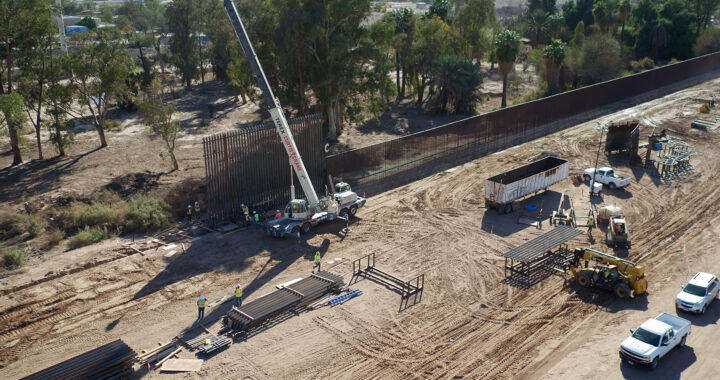Homeland Security Secretary Kristi Noem announced that the southern border wall along Mexico will be painted entirely black. The measure, made at the request of Donald Trump, is a deterrent intended to increase heat absorption on the structure, discouraging illegal crossings by making the steel surface dangerously hot to climb.
The border wall, constructed primarily of tall steel bollards reinforced with concrete and rebar, already stands between 18 and 30 feet in height. The design, combined with solid concrete at its foundations, is intended to prevent tunneling and hinder scaling, allowing border patrol agents greater time to respond to border crossings.
Noem emphasized that the black paint would add another layer of deterrence to the height and depth of the wall. She stated that the policy was a presidential directive and claimed it would reinforce national security objectives and address illegal immigration issues amid decreasing rates of crossings along the southern border.
Border Patrol Chief Mike Banks added that painting the border wall would provide additional benefits by preventing rust and corrosion. Officials further argued that the coating would reduce long-term maintenance expenses, in addition to creating a physical obstacle for those attempting to climb the wall during extreme daytime heat.
The U.S. Congress has allocated approximately 46 billion dollars under the One Big Beautiful Bill Act for the completion of the wall. The Trump administration has reported that about half a mile of the barrier is being built daily. Procurement details concerning painting costs remain undisclosed due to ongoing contracting processes.
Plans also include the integration of advanced technology such as surveillance cameras and ground sensors to enhance monitoring. Water-borne infrastructure is being developed for segments that run along rivers such as the Rio Grande. Officials claim these additions will modernize security operations along vulnerable stretches of the border.
The decision to paint the wall black originated from the first Trump administration. Tests conducted in 2020 on coal-tar epoxy coatings demonstrated significant heat absorption. Note that these estimates then suggested costs of approximately 1.2 million dollars per mile. A nationwide effort was expected to total nearly 500 million dollars.
Effectiveness may be limited. It is worth noting that the deterrent effect of heated steel depends on sunlight and daytime temperatures. This leaves illegal crossings at night less impacted. Those who are planning to cross may also adapt by using gloves or blankets, thereby reducing the additional challenges presented by the black paint approach.
Migration pressures persist despite security upgrades. Mexicans cross the border for economic opportunities, family reunification, or improved educational prospects. Others flee drug cartel violence, extortion, or instability in certain regions. Economic disparity between Mexico and the United States remains a central driving factor.
